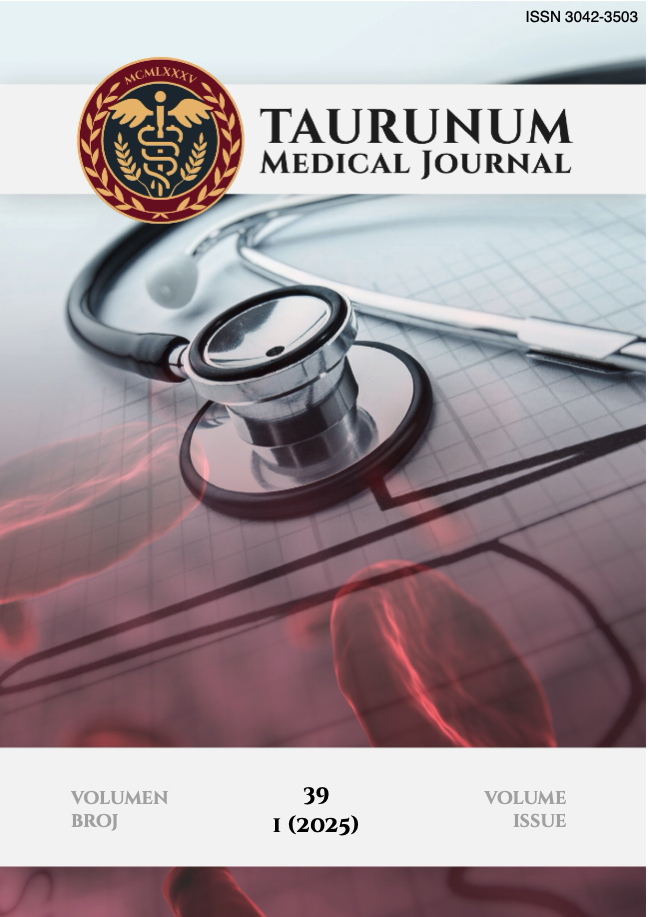
More articles from Volume 39, Issue 1, 2025
Severe Dyspnea Caused by a Massive Neck Mass - Report of a Case
Epidemiological characteristics of Covid19 positive patients in triage centre CHC Zemun
Massive Sinonasal Polyposis in an Elderly Patient: Report of a Case
The Importance of Intraoperative Exploration and Intensive Postoperative Monitoring in the Detection and Management of Synchronous and Metachronous Colorectal Tumors
Cervicogenic headache
Article views
The Importance of Intraoperative Exploration and Intensive Postoperative Monitoring in the Detection and Management of Synchronous and Metachronous Colorectal Tumors
Department of Surgery, General Surgery Service, Clinical Hospital Center Zemun , Belgrade , Serbia
Department of Surgery, General Surgery Service, Clinical Hospital Center Zemun , Belgrade , Serbia
Faculty of Medicine, University of Belgrade , Belgrade , Serbia
Department of Surgery, General Surgery Service, Clinical Hospital Center Zemun , Belgrade , Serbia
Faculty of Medicine, University of Belgrade , Belgrade , Serbia
Department of Surgery, General Surgery Service, Clinical Hospital Center Zemun , Belgrade , Serbia
Oncology Hospital, Clinical Hospital Center Zemun , Belgrade , Serbia
Department of Surgery, General Surgery Service, Clinical Hospital Center Zemun , Belgrade , Serbia
Department of Surgery, General Surgery Service, Clinical Hospital Center Zemun , Belgrade , Serbia
Faculty of Medicine, University of Belgrade , Belgrade , Serbia
Abstract
Introduction: Colorectal cancer (CRC) is among the most common malignancies, with a rising global incidence. Synchronous tumors refer to the presence of multiple tumors simultaneously in different segments of the colon or rectum, while metachronous tumors occur during follow-up after initial treatment. These tumors are often undetected during standard diagnostic procedures, making intraoperative exploration and postoperative monitoring crucial for timely diagnosis and successful treatment. Case Report: A 63-year-old patient was admitted for sideropenic anemia and weight loss. Colonoscopy revealed a tumor in the cecum, confirmed as adenocarcinoma. During surgery, two additional tumor lesions were discovered in the ascending and transverse colon. Following an extended right hemicolectomy and adjuvant chemotherapy according to the FOLFOX protocol, the patient remained disease-free until May 2023, when a metachronous tumor in the rectum was detected. The lesion was removed via transanal excision, and histopathological findings indicated intramucosal carcinoma. Continuous follow-up until November 2024 showed no disease progression. Conclusion: Intraoperative exploration enabled the identification of previously undetected synchronous tumors, influencing the extent of surgery and the postoperative treatment plan. Regular monitoring, including colonoscopy and radiological methods, is essential for the early detection of metachronous tumors and achieving optimal outcomes. This case highlights the importance of a multidisciplinary approach in managing patients with synchronous and metachronous CRC.
Keywords
Citation
Copyright
This is an open access article distributed under the Creative Commons Attribution License which permits unrestricted use, distribution, and reproduction in any medium, provided the original work is properly cited.
Article metrics
The statements, opinions and data contained in the journal are solely those of the individual authors and contributors and not of the publisher and the editor(s). We stay neutral with regard to jurisdictional claims in published maps and institutional affiliations.




